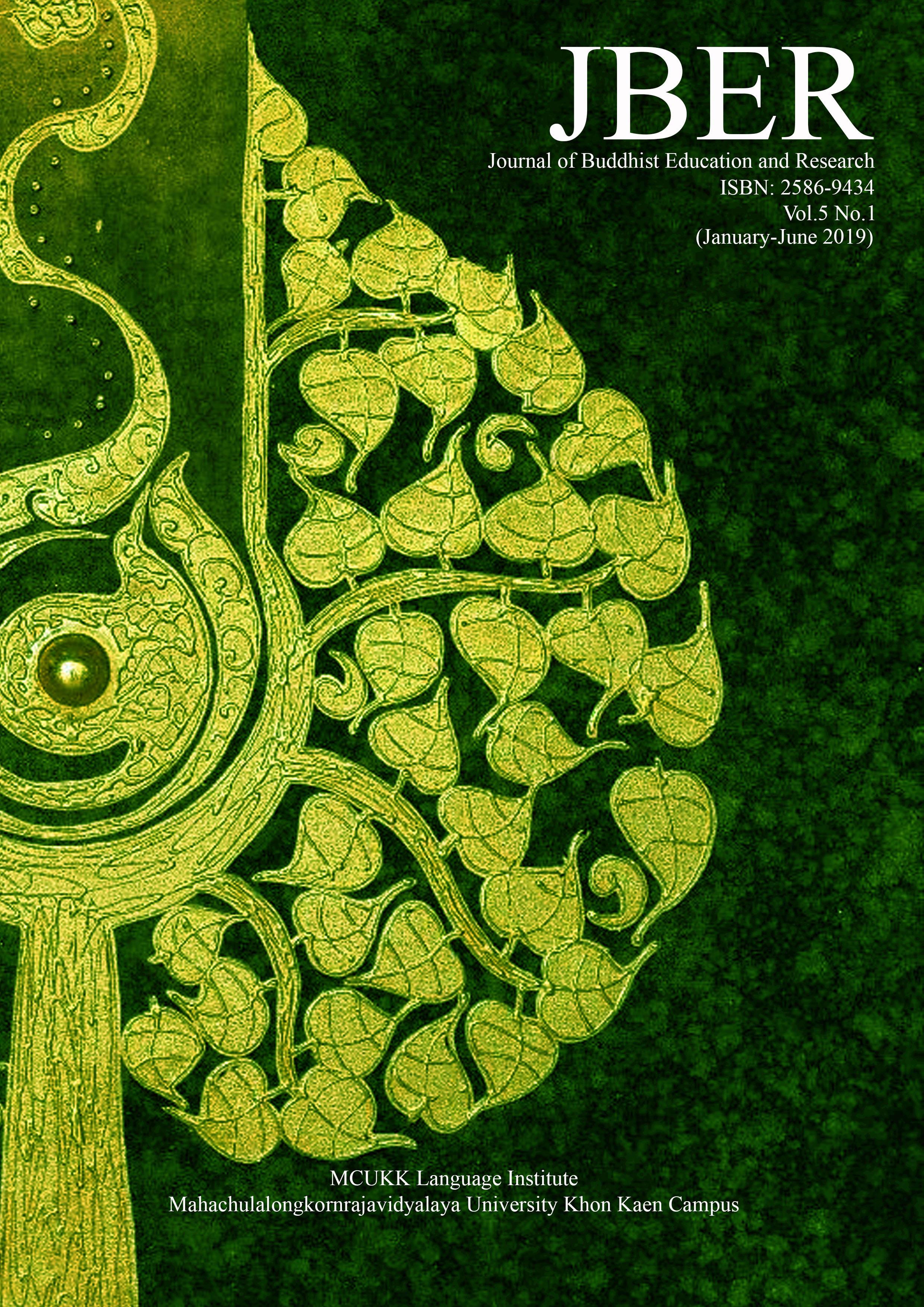The Role and Status of Deities in Tibetan Buddhist Practice
Keywords:
deities, Tibetan BuddhismAbstract
Throughout the history of Tibetan Buddhism, many controversies have occurred according to the different comprehension of Buddha’s teachings such as the two truths and the sudden versus gradual path. The issue upon the status and the role of the deity is one of the most interesting issues in the publicity today. This critical problem has occurred when the 14th Dalai Lama denies the Dorje Shugden deity propitiation with the reason that this deity is not the refuge. He also uses his religio-political status to ask the Dorje Shugden deity worshipers to follow his decision. Consequently, this causes the dissatisfaction for the Dorje Shugden deity worshiper communities. As the outsider perspective, for Buddhists, to deny taking refuge in what is not triratna should not be the critical problem at all. Throughout the Buddhist doctrine indicates that Buddha, Dharma and Sangha are the highest refuge; while, the some deities historically are often appeared in the sense of followers or some are just phantom or spiritual beings. However, in Tibetan Buddhist context, the many deities are recognized as the refuge. With the long duration of Buddhism in Tibet, the question why the status of the deities becomes equal to the triratna is not easy to be anticipated. In order to provide some perspective upon this issue, this paper aims to investigate the role and status of deities in Tibetan Buddhist practice. In so doing, there will be a division of the status and role of deities in two aspects: (1) the external status and roles and (2) the internal status and roles. The external status refers to the natural, social and spiritual status of the deities. The external roles are differentiated according to their different aspects of the status. The internal status refers to the natural status of the deities when they exist in the state of meditative practice, of course, its roles also depends this status and functions.References
Brück, Michael von., (2001). Canonicity and Divine Interference: The Tulkus
and the Shugden-Controversy. Oxford University Press. [cited 16th
May 2009]. Retrieved from http://infobuddhismus.de/dorje_shugden_controversy.html.
Kay, D., (1997). The New Kadampa Tradition and the Continuity of Tibetan
Buddhism in Transition. Journal of Contemporary Religion 12:3.
Routledge: UK.
Nyanatiloka. "Buddhist Dictionary." In Manual of Buddhist Terms & Doctrine
edited by Nyanatiloka. Kandy: Buddhist Publication Society 1952.
Reginald, R. A., (1986). Some Aspects of the Tulku Tradition in
Tibet. The Tibet Journal. 11 No. 4. JSTOR: UK.
Reginald, R. A., (1968). Indestructible Truth: The Living Spirituality of
Tibetan Buddhism. Shambhala Publication: Boston & London.
Rje, Mkhas Grup. (1968). Mkhas Grup Rje's Fundamentals of the Buddhist
Tantras. Translated by Ferdinand D. Lessing and Alex Wayman.
Paris Mouton.
Schmidt, Marcia Binder. (2004). Dzogchen Essentials: The Path That
Clarified Confusion. Translated by Erick Pema Kunsang.
Boudhanath, Hong Kong Rangjung Yeshe Publication.
Williams, P., (1996). A Quick Note on Dorje Shugden (Rdo Rje Shugs Ldan)
University of Bristol 1996 [cited 16th May 2009]. Retrieved from
http://info-buddhism.com/dorje_shugden_note_Paul_Williams.html.
Wojkowitz, Rene De Nebesky. (1956). Oracles and Demons of Tibet: The
Cult and Iconography of the Tibetan Protective Deities. London:
Mouton & Co., Publishers, The Hague.
and the Shugden-Controversy. Oxford University Press. [cited 16th
May 2009]. Retrieved from http://infobuddhismus.de/dorje_shugden_controversy.html.
Kay, D., (1997). The New Kadampa Tradition and the Continuity of Tibetan
Buddhism in Transition. Journal of Contemporary Religion 12:3.
Routledge: UK.
Nyanatiloka. "Buddhist Dictionary." In Manual of Buddhist Terms & Doctrine
edited by Nyanatiloka. Kandy: Buddhist Publication Society 1952.
Reginald, R. A., (1986). Some Aspects of the Tulku Tradition in
Tibet. The Tibet Journal. 11 No. 4. JSTOR: UK.
Reginald, R. A., (1968). Indestructible Truth: The Living Spirituality of
Tibetan Buddhism. Shambhala Publication: Boston & London.
Rje, Mkhas Grup. (1968). Mkhas Grup Rje's Fundamentals of the Buddhist
Tantras. Translated by Ferdinand D. Lessing and Alex Wayman.
Paris Mouton.
Schmidt, Marcia Binder. (2004). Dzogchen Essentials: The Path That
Clarified Confusion. Translated by Erick Pema Kunsang.
Boudhanath, Hong Kong Rangjung Yeshe Publication.
Williams, P., (1996). A Quick Note on Dorje Shugden (Rdo Rje Shugs Ldan)
University of Bristol 1996 [cited 16th May 2009]. Retrieved from
http://info-buddhism.com/dorje_shugden_note_Paul_Williams.html.
Wojkowitz, Rene De Nebesky. (1956). Oracles and Demons of Tibet: The
Cult and Iconography of the Tibetan Protective Deities. London:
Mouton & Co., Publishers, The Hague.
Downloads
Published
2019-06-25
How to Cite
Wilson and Others, J. . (2019). The Role and Status of Deities in Tibetan Buddhist Practice. Journal of Buddhist Education and Research (JBER), 5(1), 8–13. retrieved from https://so06.tci-thaijo.org/index.php/jber/article/view/242826
Issue
Section
Academic Article





